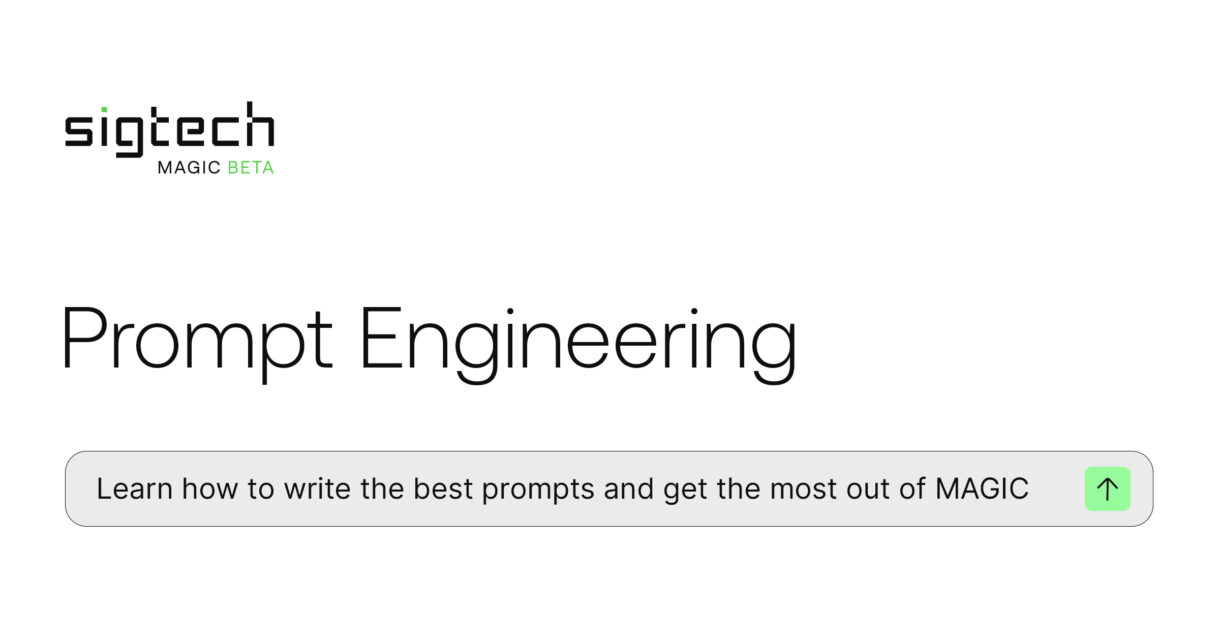MAGIC is designed to expertly deal with the heavy lifting of financial research, such as writing code, analyzing data, and backtesting trading strategies. Nevertheless, the hardest first step can sometimes be figuring out exactly how to make MAGIC work effectively for you. As with all large language models, the quality of MAGIC’s response largely depends on the quality of the prompt it’s given.
To help you unlock MAGIC’s full capabilities, here’s a quick guide on how to write useful and effective prompts.
What can I ask MAGIC to do?
Before you start talking to MAGIC, it’s good to have an idea of what you want to use it for, as well as the output you’d like to see.
You can use MAGIC like a search engine to learn facts and get information—for example:
“What’s the impact of US elections on the major US indices in the last 20 years?”
Or you can instruct MAGIC to carry out tasks, such as:
“Create an enhanced index strategy on Nasdaq 100, and compare against the performance of the index.”
Stuck on prompt ideas? Try one of the pre-made prompts that appear in the MAGIC interface.

Once you have an idea of your use case and end goal, you can begin to build your prompt to generate a more complex response.
Tips and tricks
Give clear instructions
Describe exactly what you want MAGIC to do, and use straightforward commands (like “Write a report” or “Include graphs”). If there are multiple steps MAGIC will need to take, outline them in sequential order. You can use bullet points and lists to structure your instructions.
Provide context
Like training a colleague, MAGIC performs better if you equip it with all the necessary information to help it succeed. It will have a better understanding of your prompt if you give detailed background information: for example, why it is carrying out a task, what your end goal is, and any surrounding information that helps to set the scene.
Although MAGIC can achieve a lot with a simple prompt, adding context will help it craft a more nuanced response.
Be specific about what you would like MAGIC to do
If you want it to write code or create data visualizations as part of its response, let it know. If you want to track the performance of a single stock for a particular period of time, specify the exact length of time. That way, you’ll tailor MAGIC’s response to be as relevant as possible.
Break complex prompts down
While it’s great to provide all the necessary contextual information and specific details, MAGIC can sometimes get overloaded by particularly big queries. As a result, it may forget certain details or skip steps when trying to handle everything in one go.
Try prompt chaining, in which you break down long prompts into smaller sub-tasks. This helps MAGIC gather its thoughts and focus at each step, which reduces the chance of mishandling a sub-task.
Also, try to stick to one idea per prompt. If you want to ask MAGIC about something unrelated, it’s best to start a new conversation instead.
Use natural, conversational language
MAGIC is powered by large language models, so the best way to interact with it is by using natural language. Talk to it as you would with a human.
Direct your query to specific agents
Each agent in the MAGIC team has been specially designed to deal with a particular task in financial research and analysis. For example, the Fed Analyst can access Federal Reserve FOMC documents, while the SigTech Quant can retrieve financial market data and perform backtesting.
So, it’s well worth making use of their individual expertise. Type ‘@’ in the chat to bring up the list of available agents you can talk directly to.
Ask MAGIC to repeat or redo a response
Large language models can sometimes produce hallucinations: this is information that’s incorrect or unrelated to your query. In such instances, you can ask MAGIC to review its own work and make corrections, or directly @ the Planner agent to walk you through how a response was generated.
By asking MAGIC to self-evaluate and iterate its answer, you can gently steer it back on track.
Example
This is how we used MAGIC to come up with a recent LinkedIn post about the US Purchasing Managers’ Index (PMI). By providing context and asking for specific information, we were able to guide MAGIC to produce a helpful and detailed response.
Vague prompt
“Can you tell me about the PMI trends over the recent years?”
In this instance, MAGIC did its best to fill in any gaps and provide a general overview. While it was still a useful starting point for learning about a brand new topic and summarizing key points, it didn’t provide the level of detail and specificity we wanted to see.
So, using the tips and tricks above, we made some improvements to the prompt…
Specific prompt
“The US PMI recently shot up in Q2 of 2024. Can you chart the historical PMI trends for the past 10 years?
Given the current circumstances, what are the economic indicators suggesting the potential timing for a recovery from the recent 21-month contraction trend in the US PMI, and if contractions persist, what are the likely PMI trends over the next 6 months based on key influencing factors and recent data?
Give clear graphs and tables to corroborate your responses.“
In this example, we provided context by mentioning the recent US PMI trend, before asking MAGIC to look back at previous PMI trends. We specified the time periods for MAGIC to look at, such as historical PMI trends over the past ten years and the PMI forecast for the next six months. We also instructed MAGIC to include graphs and tables in its response.
Finally, we broke down the prompt into multiple sub-tasks for MAGIC to tackle, one step at a time. As a result, MAGIC’s response was much more refined: it produced the exact data visualizations we wanted to see, and addressed the specific bits of information we highlighted.





